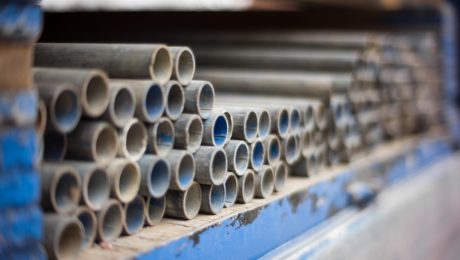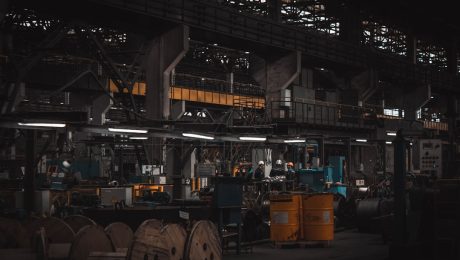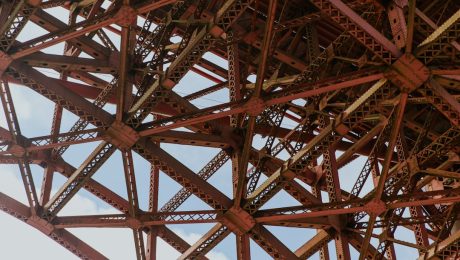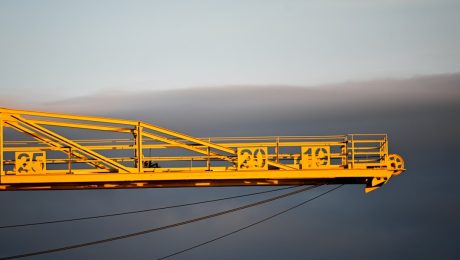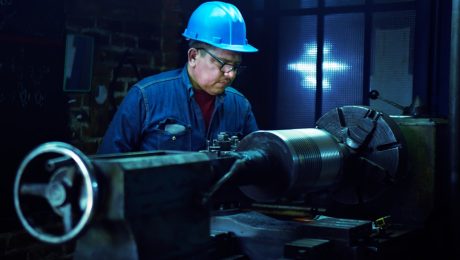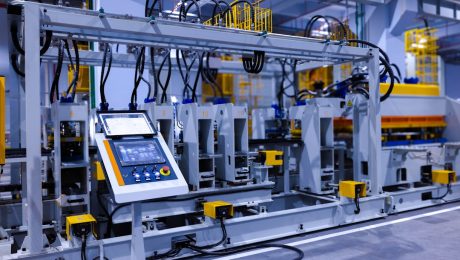body { font-family: sans-serif; line-height: 1.6; }
h1, h2, h3 { color: #333; }
img { max-width: 100%; height: auto; }
Cold drawn square bars are ubiquitous in various industries, offering a unique combination of precision, strength, and surface finish. This comprehensive guide delves into the intricacies of these versatile steel products, exploring their manufacturing process, properties, applications, advantages, and specifications. Understanding these aspects is crucial for engineers, designers, and procurement professionals seeking high-performance materials for their projects.
The Cold Drawing Process: Precision Engineering at its Finest
Unlike hot-rolled bars, which are shaped at high temperatures, cold drawn square bars undergo a process of deformation at room temperature. This involves pulling a pre-rolled bar through a series of dies with progressively smaller square openings. The process significantly reduces the cross-sectional area, increasing the material’s strength and improving its dimensional accuracy. This cold working process introduces significant strain hardening, resulting in a superior surface finish and tighter tolerances compared to hot-rolled counterparts. The precise control over the reduction in area allows for the production of bars with extremely accurate dimensions and consistent properties throughout their length.
The process typically starts with a hot-rolled bar, which is then subjected to pickling to remove surface scale and oxides. This ensures a clean surface for drawing and enhances the final product’s quality. Lubricants are applied to reduce friction during the drawing process, preventing surface damage and ensuring smooth passage through the dies. The entire process is carefully monitored and controlled to maintain the desired dimensions and properties of the final product. Modern cold drawing facilities utilize sophisticated automation and quality control measures to ensure consistent high quality.
Exceptional Mechanical Properties: Strength and Durability
The cold drawing process significantly enhances the mechanical properties of the steel. The strain hardening leads to increased tensile strength, yield strength, and hardness. Cold drawn square bars exhibit higher tensile strength and yield strength compared to their hot-rolled counterparts. This increased strength translates to enhanced durability and resistance to deformation under stress. The improved surface finish also contributes to fatigue resistance, making them suitable for applications experiencing cyclic loading.
The specific mechanical properties vary depending on the grade of steel used and the drawing parameters. Common steel grades used for cold drawn square bars include low carbon steel, medium carbon steel, and alloy steels. Each grade offers a unique combination of strength, ductility, and weldability, allowing for selection based on the specific application requirements.
Diverse Applications: Catering to a Wide Range of Industries
The combination of high strength, precise dimensions, and excellent surface finish makes cold drawn square bars ideal for a wide range of applications across various industries. These include:
- Automotive: Used in chassis components, axles, and other structural parts requiring high strength and precision.
- Construction: Employed in reinforcing bars, structural components, and machinery parts.
- Machinery and Equipment: Used extensively in the manufacturing of machine parts, tools, and fixtures.
- Aerospace: Selected for applications requiring high strength-to-weight ratio and dimensional accuracy.
- Agricultural Equipment: Used in the construction of robust and durable components.
Advantages Over Other Steel Products: Why Choose Cold Drawn?
Several key advantages make cold drawn square bars a preferred choice over other steel products, such as hot-rolled bars or other shaped sections:
- Superior Dimensional Accuracy: Cold drawing results in tighter tolerances and better surface finish, reducing the need for further machining.
- Enhanced Mechanical Properties: Increased strength, hardness, and fatigue resistance compared to hot-rolled bars.
- Improved Surface Finish: The smooth surface reduces friction and wear, enhancing performance and extending service life.
- Cost-Effectiveness: Reduced machining requirements can lead to significant cost savings.
- Consistent Quality: The controlled manufacturing process ensures consistent properties throughout the bar.
Specifications and Standards: Ensuring Quality and Consistency
Cold drawn square bars are manufactured to meet various industry standards, ensuring consistent quality and performance. These standards specify the dimensions, tolerances, mechanical properties, and chemical composition of the bars. Common standards include ASTM, ISO, and DIN standards, which provide detailed specifications for different grades of steel and sizes of square bars. Understanding these standards is crucial for selecting the appropriate material for a specific application. These standards also dictate testing procedures to ensure the bars meet the required specifications. These tests typically include tensile testing, hardness testing, and chemical analysis to verify the material’s composition and properties.
Choosing the right cold drawn square bar requires careful consideration of the application’s requirements, including the necessary strength, dimensional tolerances, and surface finish. Consulting with a supplier specializing in steel products can ensure that you select the appropriate material for your needs.
Tags: Cold drawn square bars, steel bars, square steel bars, cold drawing process, mechanical properties
The steel industry is a cornerstone of global infrastructure, demanding skilled professionals with proven expertise. Gaining the right certifications can significantly boost your career prospects, open doors to higher-paying roles, and enhance your credibility within this competitive field. This comprehensive guide will delve into the various certifications available, their benefits, and how to navigate the application process.
Understanding the Importance of Steel Industry Certifications
Certifications in the steel industry serve as a testament to your skills and knowledge, demonstrating your commitment to quality, safety, and industry best practices. They act as a standardized measure, allowing employers to quickly identify candidates with the necessary qualifications. These certifications aren’t just about ticking boxes; they signify a dedication to continuous learning and professional development, setting you apart from your peers. Whether you’re a welder, metallurgical engineer, quality control specialist, or in management, relevant certifications can significantly enhance your career trajectory. They can lead to increased earning potential, greater job security, and access to more challenging and rewarding projects.
Types of Steel Industry Certifications: A Detailed Overview
The steel industry offers a diverse range of certifications, catering to various specializations and skill levels. Some of the most prominent include:
- American Welding Society (AWS) Certifications: These certifications cover various welding processes, materials, and testing methods. AWS certifications are highly respected globally and are crucial for welders at all levels, from beginners to senior specialists. Specific certifications include Certified Welding Inspector (CWI), Certified Welding Engineer (CWE), and various certifications for specific welding processes (e.g., GMAW, SMAW).
- ISO 9001:2015 Certification (Quality Management Systems): While not specific to steel manufacturing, this certification is vital for companies operating within the industry. It demonstrates a commitment to quality management processes and is often a prerequisite for securing contracts and maintaining a competitive edge. Individuals involved in quality control and management benefit significantly from understanding and implementing ISO 9001 standards.
- ASME Certifications (American Society of Mechanical Engineers): ASME certifications are crucial for engineers and technicians involved in pressure vessel design, fabrication, and inspection. These certifications demonstrate competency in adhering to stringent safety and quality standards.
- Metallurgical Engineering Certifications: These certifications focus on the scientific understanding of metals and their properties. They are highly valuable for professionals involved in materials selection, process optimization, and quality control within steel manufacturing. Specific certifications may vary depending on the institution offering them.
- National Association of Corrosion Engineers (NACE) Certifications: These certifications focus on corrosion prevention and control, a critical aspect of steel structures and equipment. They are valuable for engineers, inspectors, and technicians involved in protecting steel from degradation.
The Application Process: Steps to Certification Success
The application process for steel industry certifications varies depending on the specific certification body and the level of certification sought. However, common steps generally include:
- Research and Selection: Identify the certification that aligns with your career goals and skillset.
- Eligibility Requirements: Carefully review the eligibility criteria, including required experience, education, and training.
- Application Submission: Complete and submit the application form, providing all necessary documentation.
- Examination/Assessment: Depending on the certification, you may need to undergo a written exam, practical assessment, or both.
- Certification Award: Upon successful completion of the requirements, you will receive your certification.
- Renewal/Recertification: Many certifications require periodic renewal to maintain validity, often involving continuing education or re-examination.
Benefits of Steel Industry Certifications: Career Advancement and Beyond
The benefits of pursuing steel industry certifications extend far beyond simply adding a line to your resume. They represent a tangible investment in your career, leading to:
- Increased Earning Potential: Certified professionals often command higher salaries and receive better compensation packages.
- Enhanced Career Opportunities: Certifications open doors to more challenging and rewarding roles within the steel industry.
- Improved Job Security: Certified professionals are highly sought after, making them less vulnerable to job losses during economic downturns.
- Increased Credibility and Recognition: Certifications establish your expertise and build trust among employers and clients.
- Professional Development and Networking: The process of obtaining certifications often involves networking with industry professionals and engaging in continuous learning.
- Global Recognition: Many certifications, like AWS certifications, are internationally recognized, opening up global career opportunities.
Maintaining Your Certification: Continuous Professional Development
Once you’ve earned your certification, the journey doesn’t end. Most certifications require ongoing professional development and recertification to maintain their validity. This continuous learning ensures that you stay abreast of the latest industry advancements, technologies, and best practices. Participating in workshops, conferences, and online courses are excellent ways to fulfill continuing education requirements and enhance your knowledge and skills. Staying updated not only keeps your certification active but also demonstrates your commitment to excellence, further solidifying your position within the steel industry.
Investing in steel industry certifications is an investment in your future. By understanding the various options, the application process, and the significant benefits they offer, you can forge a successful and rewarding career in this vital industry.
Tags: steel industry certification, steel certifications, welding certification, ISO 9001 certification, ASME certification, career advancement, professional development
The steel industry, a cornerstone of global infrastructure and manufacturing, is undergoing a dramatic transformation. Digitalization is no longer a futuristic concept; it’s the driving force behind increased efficiency, transparency, and profitability in steel commerce. This post explores the multifaceted impact of digital technologies on the steel industry, examining how they are reshaping every aspect of the business, from procurement to delivery.
Optimizing the Steel Supply Chain with Digital Tools
The steel supply chain is notoriously complex, involving numerous intermediaries, geographically dispersed operations, and intricate logistics. Digitalization offers a powerful solution to streamline this process. Real-time tracking of materials using RFID and GPS technologies provides unparalleled visibility into inventory levels, shipment status, and potential bottlenecks. Predictive analytics, powered by big data and AI, can forecast demand fluctuations and optimize production schedules, minimizing waste and maximizing efficiency. Furthermore, advanced planning and scheduling software can coordinate activities across the entire supply chain, ensuring timely delivery and reducing lead times.
Enhancing Steel Trading and E-commerce Platforms
The traditional methods of steel trading, often involving lengthy negotiations and paperwork, are being rapidly replaced by sophisticated e-commerce platforms. These platforms provide a centralized marketplace for buyers and sellers to connect, negotiate prices, and execute transactions efficiently. Digital contract management systems automate the process of creating, signing, and managing contracts, reducing the risk of errors and disputes. Online platforms also facilitate the secure exchange of documents and information, improving transparency and trust between parties. The integration of AI-powered chatbots and virtual assistants can further enhance the customer experience, providing instant support and answers to common queries.
Leveraging Big Data and Analytics for Smarter Decision-Making
The vast amounts of data generated throughout the steel supply chain represent a treasure trove of insights. Big data analytics tools can process this data to identify trends, patterns, and anomalies that would otherwise go unnoticed. This information can be used to improve forecasting accuracy, optimize pricing strategies, and identify areas for cost reduction. For example, analyzing historical sales data can help predict future demand, allowing steel producers to adjust production levels accordingly. Similarly, analyzing market trends can inform pricing decisions, maximizing profitability while remaining competitive.
The Role of Artificial Intelligence (AI) and Machine Learning (ML) in Steel Production
AI and ML are revolutionizing steel production processes, from raw material selection to quality control. AI-powered systems can optimize the blast furnace operations, reducing energy consumption and improving product quality. Machine learning algorithms can analyze sensor data from production lines to predict equipment failures, enabling proactive maintenance and minimizing downtime. Furthermore, AI can enhance the efficiency of quality control processes, identifying defects and inconsistencies in real-time. This leads to improved product quality, reduced waste, and enhanced customer satisfaction.
Blockchain Technology: Ensuring Transparency and Traceability in the Steel Industry
Blockchain technology offers a secure and transparent way to track the movement of steel products throughout the supply chain. Each transaction and stage of the process is recorded on the blockchain, creating an immutable record that can be accessed by all authorized parties. This enhanced traceability helps to combat counterfeiting, improve supply chain security, and ensure compliance with industry regulations. Furthermore, blockchain can facilitate secure payments and streamline documentation processes, reducing administrative overhead and improving efficiency.
The digital transformation of the steel industry is an ongoing process, with new technologies and applications constantly emerging. By embracing these innovations, steel companies can gain a significant competitive advantage, improve operational efficiency, and enhance customer relationships. The future of steel commerce is undeniably digital, and those who adapt quickly will be best positioned for success.
SEO Tags:
- Digitalization in Steel Industry
- Steel Supply Chain Optimization
- AI in Steel Manufacturing
- Blockchain in Steel Commerce
- Steel E-commerce Platforms
body { font-family: sans-serif; line-height: 1.6; }
h1, h2, h3 { color: #333; }
img { max-width: 100%; height: auto; }
In today’s fast-paced world, efficiency and cost-effectiveness are paramount. For construction, industrial, and commercial projects, modular steel system solutions offer a revolutionary approach to building and design, delivering unparalleled benefits in speed, flexibility, and sustainability. This comprehensive guide delves into the key aspects of these innovative systems, exploring their advantages and applications.
1. Design Flexibility: Adapting to Your Unique Needs
Modular steel systems excel in their adaptability. Unlike traditional construction methods that often involve rigid designs, modular steel allows for incredible flexibility. Pre-fabricated components can be easily customized and configured to meet the specific requirements of any project, regardless of size or complexity. This means incorporating unique architectural features, integrating specialized equipment, and accommodating future expansions with ease. The ability to modify and reconfigure modules also offers long-term value, allowing for adaptation to changing business needs or evolving building codes.
This flexibility extends beyond the initial design phase. Modules can be easily transported and assembled on-site, minimizing disruption and speeding up the construction timeline. Moreover, the modular nature allows for sections to be added or removed as needed, providing a scalable and adaptable solution for long-term growth and change.
2. Cost-Effectiveness: Reducing Time and Expenses
The inherent efficiency of modular steel systems translates directly into significant cost savings. The prefabrication process allows for greater control over materials and labor, minimizing waste and reducing overall project costs. Off-site construction minimizes on-site delays due to weather or labor shortages, adhering to stricter timelines and budgets. The reduced construction time also means faster project completion, allowing for quicker occupancy and return on investment.
Furthermore, the standardization of components reduces material costs and simplifies the procurement process. The ease of assembly and disassembly also contributes to cost savings during future modifications or relocation of the structure. These factors make modular steel systems a highly attractive option for businesses looking to maximize their ROI.
3. Sustainability: A Greener Approach to Construction
Modular steel construction aligns perfectly with sustainable building practices. Steel is a highly recyclable material, contributing to a smaller carbon footprint compared to traditional construction materials like concrete. The precise manufacturing process minimizes waste generation during the prefabrication stage. The reduced on-site construction also means less disruption to the surrounding environment and reduced transportation of materials, further minimizing the environmental impact.
Moreover, the longevity and durability of steel structures ensure a longer lifespan, reducing the need for frequent replacements and associated environmental consequences. Many modular steel systems are designed with energy efficiency in mind, incorporating features like improved insulation and optimized building layouts to reduce energy consumption throughout the building’s life cycle.
4. Speed and Efficiency: Accelerated Project Delivery
One of the most significant advantages of modular steel systems is their speed of construction. The prefabrication process allows for parallel work streams, with modules being built off-site while site preparation is underway. This significantly reduces the overall project timeline, often by as much as 50% compared to traditional methods. This accelerated delivery translates to faster occupancy, quicker return on investment, and reduced financing costs.
The streamlined assembly process on-site also contributes to faster completion. Because modules are pre-fabricated and precisely engineered, on-site work is simplified, requiring less skilled labor and minimizing potential delays. This efficiency allows for projects to be completed rapidly and effectively, meeting tight deadlines and satisfying client needs.
5. Diverse Applications: Across Industries and Sectors
The versatility of modular steel systems extends across a wide range of industries and applications. From commercial buildings and industrial facilities to residential projects and temporary structures, these systems offer a tailored solution for diverse needs. In the commercial sector, they are ideal for offices, retail spaces, and hotels, providing flexible and scalable solutions for businesses of all sizes.
Industrial applications include warehouses, factories, and workshops, where the strength and durability of steel are crucial. Modular steel systems are also increasingly used in the residential sector, providing affordable and sustainable housing solutions. Furthermore, their temporary nature makes them suitable for events, exhibitions, and disaster relief efforts. This adaptability makes modular steel systems a truly versatile and indispensable building solution for the modern world.
Modular steel systems are transforming the construction landscape, offering a pathway towards more efficient, sustainable, and cost-effective building practices. Their adaptability, speed, and environmental benefits make them a compelling choice for a wide range of projects.
SEO Tags:
- Modular Steel Buildings
- Steel Modular Construction
- Prefabricated Steel Structures
- Modular Steel System Solutions
- Sustainable Steel Construction
body { font-family: sans-serif; line-height: 1.6; }
h1, h2, h3 { color: #333; }
code { background-color: #f0f0f0; padding: 2px 4px; border-radius: 4px; }
Steel, a marvel of modern engineering, forms the backbone of countless structures worldwide. But its inherent strength isn’t magically harnessed; it requires meticulous calculations to ensure safety and longevity. This comprehensive guide delves into the intricacies of strength calculations in steel structures, explaining the underlying principles and methods used by structural engineers.
1. Understanding Material Properties and Yield Strength
Before embarking on any calculation, understanding the material properties of the steel is paramount. The most crucial property is the yield strength (fy), representing the stress at which the steel begins to deform plastically. This value is crucial because it dictates the maximum allowable stress the steel can withstand before permanent deformation occurs. Different steel grades possess varying yield strengths, clearly specified in their material certifications. Other important properties include tensile strength (ultimate strength), modulus of elasticity (E), and Poisson’s ratio. These properties are used in various formulas and calculations throughout the structural design process. Accurate determination of these properties is critical for reliable strength estimations. Furthermore, factors like temperature and corrosion can influence these properties, necessitating adjustments in calculations.
2. Stress and Strain: The Foundation of Steel Strength Calculations
The concepts of stress and strain are fundamental to understanding steel’s behavior under load. Stress (σ) is the force (F) applied per unit area (A), represented by σ = F/A. Strain (ε) is the deformation (ΔL) of a material relative to its original length (L), expressed as ε = ΔL/L. The relationship between stress and strain is governed by the material’s modulus of elasticity (E), with stress being directly proportional to strain in the elastic region (Hooke’s Law: σ = Eε). Understanding this relationship is crucial for determining the deformation a steel member will undergo under a given load. Calculations often involve determining the maximum stress within a member and comparing it to the allowable stress, which is a fraction of the yield strength, incorporating safety factors.
3. Common Methods for Strength Calculations: Bending, Tension, and Compression
Strength calculations vary depending on the type of loading a steel member experiences. Bending involves moments causing curvature in the member. Calculations often use the flexure formula (σ = My/I), where M is the bending moment, y is the distance from the neutral axis, and I is the moment of inertia. Tension calculations involve axial forces pulling the member apart, with stress calculated simply as σ = F/A. Compression involves axial forces pushing the member together, leading to buckling if the member is slender. Buckling calculations require considering the member’s slenderness ratio and using appropriate equations or charts to determine the critical buckling load. For more complex loading scenarios, finite element analysis (FEA) is often employed.
4. Incorporating Safety Factors and Design Codes
Safety factors are crucial in structural engineering to account for uncertainties in material properties, loading conditions, and analytical models. Design codes, such as the American Institute of Steel Construction (AISC) manual or Eurocodes, provide guidelines and equations for calculating allowable stresses and design strengths. These codes incorporate safety factors to ensure a sufficient margin of safety against failure. Understanding and correctly applying the safety factors and design code provisions is essential for ensuring the structural integrity and safety of the steel structure. Ignoring these factors can lead to catastrophic consequences.
5. Advanced Considerations: Fatigue, Welding, and Connections
Beyond basic stress and strain calculations, several advanced considerations are crucial for accurate strength estimations. Fatigue refers to the weakening of a material due to repeated cyclic loading. Fatigue analysis involves complex calculations to determine the endurance limit and predict fatigue life. Welding introduces stress concentrations and potential defects, requiring careful consideration of weld strength and quality. Connections, such as bolted or welded joints, are critical structural elements. Their strength must be carefully assessed to ensure they can adequately transfer loads. Analyzing these aspects requires specialized knowledge and often involves using advanced techniques and software.
In conclusion, strength calculations in steel structures are a complex yet vital aspect of structural engineering. By understanding the fundamental principles of stress, strain, material properties, and applying appropriate design codes and safety factors, engineers can ensure the safety and longevity of steel structures. Mastering these calculations is essential for any aspiring structural engineer.
SEO Tags: Steel Structure Calculation, Steel Strength Calculation, Structural Steel Design, Yield Strength Calculation, Steel Design Codes
body { font-family: sans-serif; line-height: 1.6; }
h1, h2, h3 { color: #333; }
h1 { font-size: 2.5em; }
h2 { font-size: 2em; }
h3 { font-size: 1.5em; }
Navigating the complex world of European manufacturing standards can be daunting. This comprehensive guide will help you understand the intricacies of EN standards and how to ensure your manufacturing processes consistently deliver products that meet these crucial requirements. Failure to comply can lead to significant financial penalties, reputational damage, and even product recalls. Let’s delve into the key aspects of manufacturing to meet EN standards.
Understanding EN Standards and Their Importance
EN standards, developed by the European Committee for Standardization (CEN), represent a crucial set of technical specifications and requirements for products and services across Europe. These standards are designed to ensure safety, quality, interoperability, and efficiency. Compliance with EN standards is often mandatory for products to be sold within the European Economic Area (EEA). They cover a vast range of industries, from construction and electronics to food safety and medical devices. The importance of adhering to these standards cannot be overstated; it’s vital for market access, consumer trust, and legal compliance.
Identifying Relevant EN Standards for Your Product
The first step in ensuring compliance is identifying the specific EN standards applicable to your product. This requires a thorough understanding of your product’s intended use, materials, and manufacturing processes. The relevant standards are often specified in directives or regulations relevant to your industry. Resources like the CEN website and national standardization bodies’ websites offer searchable databases of EN standards. Consulting with industry experts or engaging a compliance specialist can also be invaluable in this process. Failing to identify all relevant standards could lead to non-compliance and subsequent issues.
Implementing a Robust Quality Management System (QMS)
A robust QMS is the cornerstone of successful EN standard compliance. While not all EN standards explicitly require a specific QMS, implementing one, such as ISO 9001, provides a framework for managing all aspects of your manufacturing process, from design and production to testing and delivery. A well-defined QMS ensures consistent product quality, traceability, and documentation, crucial for demonstrating compliance during audits. This system should include procedures for material sourcing, production processes, quality control checks, and corrective actions for non-conformities.
Rigorous Testing and Verification Procedures
Regular testing and verification are essential to ensure your products consistently meet EN standards. This involves both internal testing throughout the manufacturing process and external testing by accredited laboratories. The type and frequency of testing will depend on the specific EN standards applicable to your product. Thorough documentation of all testing procedures and results is crucial for demonstrating compliance. Maintaining accurate records allows for traceability and facilitates quick responses to any identified issues. Neglecting rigorous testing could lead to the release of non-compliant products.
Obtaining Necessary Certifications and Declarations of Conformity
Depending on the specific EN standard and the product category, obtaining certification from a Notified Body might be required. Notified Bodies are independent organizations accredited by national authorities to assess conformity with specific regulations. They conduct audits and tests to verify compliance. In cases where certification isn’t mandatory, a Declaration of Conformity (DoC) might suffice. This is a formal statement by the manufacturer that their product meets the relevant EN standards. Accurate and complete documentation is vital for both certifications and DoCs. This process ensures that your products meet the legal requirements and build consumer confidence.
Successfully navigating the world of EN standards requires a proactive and comprehensive approach. By understanding the standards, implementing a robust QMS, carrying out rigorous testing, and obtaining necessary certifications, manufacturers can ensure their products are compliant, safe, and meet the high expectations of the European market. This commitment to quality and compliance not only protects your business from legal repercussions but also enhances your reputation and fosters trust with your customers.
SEO-Friendly Tags:
- EN Standards Manufacturing
- European Conformity Assessment
- ISO 9001 and EN Standards
- Product Safety and EN Standards
- EN Standard Certification
High-Performance Engineered (HEA) steel profiles are revolutionizing the construction of heavy-load structures, offering superior strength, efficiency, and sustainability compared to traditional I-beams. This comprehensive guide delves into the key aspects of using HEA profiles, providing valuable insights for engineers and construction professionals.
Understanding HEA Profile Properties and Advantages
HEA profiles are characterized by their optimized geometry, resulting in significantly improved strength-to-weight ratios. Unlike traditional I-beams, HEA sections feature a wider flange and a narrower web, offering greater bending resistance and torsional stiffness. This optimized design leads to several key advantages:
- Increased Load Capacity: HEA profiles can support heavier loads with smaller sections compared to traditional I-beams, leading to cost savings and reduced material usage.
- Enhanced Structural Integrity: Their superior strength and stiffness contribute to improved overall structural integrity, making them ideal for demanding applications.
- Reduced Weight: The optimized design leads to lighter structures, reducing transportation costs and simplifying installation.
- Improved Slenderness Ratio: The wider flanges contribute to a better slenderness ratio, enhancing resistance to buckling and lateral torsional buckling.
- Sustainability: Reduced material usage contributes to a smaller carbon footprint, making HEA profiles a more sustainable option.
Design Considerations for HEA Profiles in Heavy Load Structures
Designing with HEA profiles requires careful consideration of several factors. Accurate load calculations are paramount, ensuring the selected profile can withstand all anticipated stresses. This includes:
- Dead Loads: The weight of the structure itself, including the HEA profiles, connections, and any permanent fixtures.
- Live Loads: Variable loads such as occupancy, equipment, and environmental factors (snow, wind).
- Dynamic Loads: Loads that change over time, such as seismic activity or traffic vibrations.
- Connection Design: Proper connection design is crucial for transferring loads efficiently. High-strength bolts or welds are typically employed.
- Stability Analysis: Buckling and lateral torsional buckling need to be assessed, especially for longer spans. This often involves advanced finite element analysis (FEA).
- Fire Resistance: For structures with fire safety requirements, fire protection measures might be necessary.
HEA Profile Applications in Heavy-Load Structures
The exceptional strength and efficiency of HEA profiles make them suitable for a wide range of heavy-load applications:
- Bridges: HEA profiles are increasingly used in bridge construction, providing efficient load-bearing capacity and contributing to lighter, more economical designs.
- High-Rise Buildings: Their high strength-to-weight ratio makes them suitable for use in high-rise building frameworks, reducing material costs and construction time.
- Industrial Structures: Heavy industrial applications such as factories, warehouses, and storage facilities benefit from the robustness and durability of HEA profiles.
- Offshore Structures: HEA profiles can withstand the harsh marine environment, making them suitable for offshore platforms and wind turbine towers.
- Crane Structures: Their high torsional stiffness makes them ideal for crane girders and other load-bearing components.
Comparing HEA Profiles with Traditional I-Beams
While traditional I-beams remain a viable option, HEA profiles often offer significant advantages:
| Feature | HEA Profile | Traditional I-Beam |
|---|---|---|
| Strength-to-Weight Ratio | Higher | Lower |
| Stiffness | Higher | Lower |
| Cost-Effectiveness (Often) | Higher | Lower (depending on specific application) |
| Manufacturing Process | More advanced rolling processes | Traditional rolling processes |
| Sustainability | Generally more sustainable due to reduced material usage | Less sustainable compared to HEA profiles |
Future Trends in HEA Profile Technology
Ongoing research and development continue to improve HEA profile technology. Future trends include:
- Advanced Materials: Incorporating higher-strength steels and other advanced materials to further enhance performance.
- Optimized Geometries: Continuous refinement of profile geometries through computational modeling and simulations.
- Sustainable Manufacturing: Developing more environmentally friendly manufacturing processes.
- Improved Connection Techniques: Developing more efficient and reliable connection methods to fully utilize the strength of HEA profiles.
- Digital Twin Technology: Utilizing digital twins to monitor structural performance and optimize maintenance schedules.
In conclusion, HEA profiles are a game-changer in the field of heavy-load structure design. Their superior properties, coupled with ongoing technological advancements, position them as the preferred choice for engineers seeking efficient, robust, and sustainable solutions.
body {
font-family: sans-serif;
line-height: 1.6;
}
h1, h2, h3 {
color: #333;
}
The steel industry, a cornerstone of global infrastructure and manufacturing, presents buyers with a critical decision: should they secure steel through spot purchases or commit to long-term contracts? This choice significantly impacts pricing, risk management, and overall supply chain stability. This in-depth analysis will illuminate the key differences, helping you determine the optimal strategy for your business.
Understanding Spot Steel Contracts: The Agile Approach
Spot contracts involve purchasing steel on the open market at the prevailing price. This offers flexibility and responsiveness to fluctuating market conditions. Buyers can capitalize on short-term price dips and adjust their purchasing volume based on immediate needs. However, this agility comes with inherent risks. Spot prices are notoriously volatile, influenced by factors like raw material costs, global demand, and geopolitical events. This volatility can lead to unpredictable cost fluctuations, potentially impacting project budgets and profitability. Furthermore, securing sufficient supply during periods of high demand can be challenging, potentially leading to delays and production disruptions.
Long-Term Steel Contracts: Stability and Predictability
Long-term contracts provide a degree of price stability and supply security. Buyers negotiate a fixed price or a price-adjustment mechanism with a supplier for a predetermined quantity of steel over a specific period (e.g., one year or more). This predictability allows for better budgeting and financial planning, reducing the risk of unexpected price surges. It also ensures a consistent supply of steel, minimizing disruptions to production schedules. However, long-term contracts lack the flexibility of spot purchases. Buyers are locked into a fixed quantity and price, potentially missing opportunities to purchase steel at lower spot market prices if the market conditions shift favorably. Furthermore, negotiating favorable terms requires careful market analysis and strong bargaining power.
Pricing Strategies: A Comparative Analysis
Spot market pricing is largely determined by supply and demand dynamics, often reflecting real-time market conditions. Long-term contract pricing involves more negotiation and often incorporates various factors, including anticipated market trends, volume discounts, and the supplier’s production costs. While long-term contracts may offer a degree of price stability, they might not always reflect the lowest possible price at any given moment. The optimal pricing strategy depends on the buyer’s risk tolerance, forecasting capabilities, and overall business objectives. Sophisticated buyers often employ hedging strategies to mitigate price risks associated with both spot and long-term contracts.
Risk Management: Navigating the Uncertainties
Spot contracts expose businesses to significant price volatility and supply chain disruptions. Effective risk management requires close monitoring of market trends, diversification of suppliers, and potentially employing hedging strategies using financial instruments like futures contracts. Long-term contracts mitigate price risk but introduce the risk of being locked into unfavorable terms if market conditions change significantly. Effective risk management for long-term contracts involves thorough due diligence on the supplier’s financial stability and operational capabilities, along with robust contract negotiation and potential clauses for price adjustments based on pre-defined indices.
Choosing the Right Strategy: Factors to Consider
The optimal steel procurement strategy depends on several factors. Businesses with short-term projects and high risk tolerance might favor spot contracts, capitalizing on short-term price fluctuations. Conversely, businesses with long-term projects requiring consistent supply and price predictability might opt for long-term contracts. Other factors to consider include: the buyer’s size and purchasing power, market forecasts, access to hedging instruments, and the overall strategic goals of the business. A hybrid approach, combining spot and long-term contracts, can also be a viable option, allowing businesses to balance flexibility and stability.
Ultimately, the decision between spot and long-term steel contracts is a strategic one, requiring a thorough understanding of market dynamics, risk tolerance, and business objectives. Careful analysis and planning are crucial for minimizing risks and maximizing the efficiency of steel procurement.
Tags: spot steel contracts, long-term steel contracts, steel procurement, steel pricing, steel market analysis
Selecting the right piping system for a chemical plant is crucial for safety, efficiency, and longevity. A poorly chosen pipe can lead to leaks, corrosion, failures, and potentially catastrophic consequences. This comprehensive guide will walk you through the key considerations for selecting the appropriate piping for your chemical processing needs.
1. Material Selection: The Foundation of Chemical Plant Piping
The choice of pipe material is paramount. It must withstand the chemical properties of the fluids being transported, the operating temperature and pressure, and the surrounding environment. Common materials include:
- Carbon Steel: Widely used for its strength and cost-effectiveness, but susceptible to corrosion in many chemical environments. Requires protective coatings or linings for aggressive chemicals.
- Stainless Steel: Offers excellent corrosion resistance, particularly in acidic and oxidizing environments. Various grades (e.g., 304, 316) provide different levels of resistance. More expensive than carbon steel.
- Duplex Stainless Steel: Combines the strength of carbon steel with the corrosion resistance of stainless steel. Ideal for high-pressure, corrosive applications.
- Nickel Alloys (e.g., Monel, Inconel): Exceptional corrosion resistance in highly aggressive environments, including those involving chloride ions and high temperatures. Very expensive.
- Plastics (e.g., PVC, CPVC, PTFE): Suitable for less demanding applications, offering good corrosion resistance but limited pressure and temperature capabilities. Often used for handling non-aggressive chemicals.
- Fiberglass Reinforced Plastic (FRP): Strong, lightweight, and corrosion-resistant, making it suitable for handling a wide range of chemicals. However, it has limitations in terms of temperature and pressure.
Material selection requires careful consideration of the specific chemicals involved, their concentration, temperature, and pressure, as well as the plant’s operating conditions.
2. Corrosion Resistance: A Critical Factor in Chemical Plant Piping
Corrosion is a major concern in chemical plants. The chosen pipe material must resist the corrosive action of the chemicals being processed. Factors influencing corrosion include:
- Chemical Composition: Different chemicals have different corrosive properties.
- Concentration: Higher concentrations generally lead to increased corrosion rates.
- Temperature: Higher temperatures often accelerate corrosion.
- Velocity: Higher flow velocities can increase erosion-corrosion.
- pH: Highly acidic or alkaline solutions are more corrosive.
Corrosion prevention strategies include material selection, protective coatings (e.g., epoxy, polyurethane), cathodic protection, and the use of corrosion inhibitors.
3. Pressure Ratings and Pipe Schedules: Ensuring Structural Integrity
Pipes must be able to withstand the operating pressure of the chemical process. Pipe schedules (e.g., Schedule 40, Schedule 80) indicate the wall thickness of the pipe, with higher schedules indicating thicker walls and greater pressure resistance. The selection of the appropriate schedule depends on the operating pressure and the material of the pipe. Pressure ratings are crucial for safety and preventing failures.
Accurate pressure calculations are essential. These calculations should account for factors such as fluid pressure, temperature, and the pipe’s material properties. Using appropriate safety factors is critical to ensuring long-term reliability.
4. Pipe Fittings and Valves: Completing the Piping System
Pipe fittings (e.g., elbows, tees, flanges) and valves (e.g., gate valves, ball valves, globe valves) are essential components of any piping system. These components must be compatible with the chosen pipe material and able to withstand the operating pressure and temperature. The selection of fittings and valves should consider factors such as:
- Material compatibility: Fittings and valves should be made of materials that are compatible with the pipe material and the chemicals being transported.
- Pressure rating: Fittings and valves must have a pressure rating that is equal to or greater than the pipe’s pressure rating.
- Flow characteristics: The selection of valves should consider the flow characteristics of the fluid being transported.
- Maintenance requirements: Some valves require more frequent maintenance than others.
5. Standards and Regulations: Adhering to Industry Best Practices
Pipe selection and installation must comply with relevant industry standards and regulations. These standards ensure safety, quality, and consistency. Key standards include:
- ASME B31.1: Power Piping
- ASME B31.3: Process Piping
- API Standards: Various standards related to piping, valves, and fittings.
- Local and national regulations: Regulations specific to the geographic location of the plant.
Adherence to these standards is crucial for ensuring the safety and reliability of the chemical plant’s piping system.
Careful consideration of all these factors is essential for successful pipe selection in a chemical plant. Consulting with experienced engineers and material specialists is highly recommended to ensure the optimal choice for your specific application.
Tags: chemical plant piping, pipe selection, chemical process piping, pipe material selection, corrosion resistance piping
The steel industry, a cornerstone of global infrastructure and manufacturing, is undergoing a dramatic transformation driven by relentless research and development (R&D). This isn’t just about incremental improvements; it’s a revolution fueled by advancements in material science, manufacturing techniques, and a growing demand for sustainable and high-performance steel products. This post delves into the exciting world of steel R&D, exploring the key areas driving innovation and shaping the future of this essential material.
1. Advanced Steel Alloys: Pushing the Boundaries of Strength and Durability
The quest for stronger, lighter, and more durable steel has led to the development of advanced alloys with tailored properties. Researchers are exploring the addition of various elements like manganese, silicon, niobium, and vanadium to enhance tensile strength, yield strength, and toughness. These modifications often lead to improved weldability, corrosion resistance, and fatigue life. For example, high-strength low-alloy (HSLA) steels are increasingly used in automotive applications to reduce vehicle weight and improve fuel efficiency. Furthermore, research into duplex stainless steels, combining austenitic and ferritic microstructures, offers exceptional corrosion resistance and mechanical properties, making them ideal for demanding environments like offshore oil and gas platforms.
2. Innovative Manufacturing Processes: Efficiency and Precision Redefined
R&D in steel manufacturing is not just about the material itself; it’s also about how it’s produced. Significant advancements are being made in areas like additive manufacturing (3D printing) for steel, allowing for the creation of complex geometries and customized parts with exceptional precision. This technology is particularly promising for the creation of lightweight components and tooling. Similarly, advancements in casting and rolling processes are improving efficiency, reducing energy consumption, and enhancing the consistency of the final product. The use of advanced sensors and data analytics is optimizing these processes, leading to higher quality and reduced waste.
3. Sustainability in Steel Production: Minimizing Environmental Impact
The steel industry is a significant energy consumer and greenhouse gas emitter. R&D is crucial in addressing these environmental concerns. Researchers are exploring various methods to reduce carbon emissions, including the development of carbon capture and storage (CCS) technologies, the use of alternative energy sources like hydrogen in steelmaking, and the optimization of existing processes to minimize energy consumption. Furthermore, research into the recycling and reuse of steel scrap is vital for creating a circular economy and reducing the need for virgin raw materials. The development of bio-based binders for iron ore pellets is another promising avenue for reducing the environmental footprint of steel production.
4. Advanced Coatings and Surface Treatments: Enhanced Performance and Longevity
Protecting steel from corrosion and wear is critical for extending its lifespan and maintaining its performance. R&D in coatings and surface treatments is constantly evolving, with new technologies offering enhanced protection against harsh environments. Advanced coatings like zinc-aluminum alloys, ceramic coatings, and polymer coatings provide superior corrosion resistance compared to traditional methods. Furthermore, research into surface modification techniques like laser cladding and thermal spraying allows for the application of specialized coatings with tailored properties, such as increased hardness, wear resistance, or thermal insulation. These advancements extend the life of steel structures and components, reducing maintenance costs and waste.
5. Applications of Steel in Emerging Technologies: Meeting Future Demands
Steel’s versatility makes it a key material in a wide range of applications, and R&D is driving its integration into emerging technologies. For instance, high-strength steels are crucial for the development of lighter and more efficient vehicles, while advanced alloys are essential for the construction of wind turbines and offshore structures. Research into the use of steel in additive manufacturing is opening up new possibilities for creating complex components for aerospace and medical applications. Furthermore, the development of magnetic steel alloys is crucial for advancements in energy storage and renewable energy technologies. Steel’s adaptability ensures its continued relevance in a rapidly evolving technological landscape.
The future of steel is bright, driven by continuous innovation in research and development. The advancements discussed above are just a glimpse into the ongoing efforts to improve the properties, manufacturing processes, and sustainability of this essential material. As R&D continues to push boundaries, we can expect even more groundbreaking innovations in the years to come, shaping a future built on stronger, smarter, and more sustainable steel.
SEO Tags:
- Steel R&D
- Steel Innovation
- Advanced Steel Alloys
- Steel Manufacturing Processes
- Sustainable Steel Production


